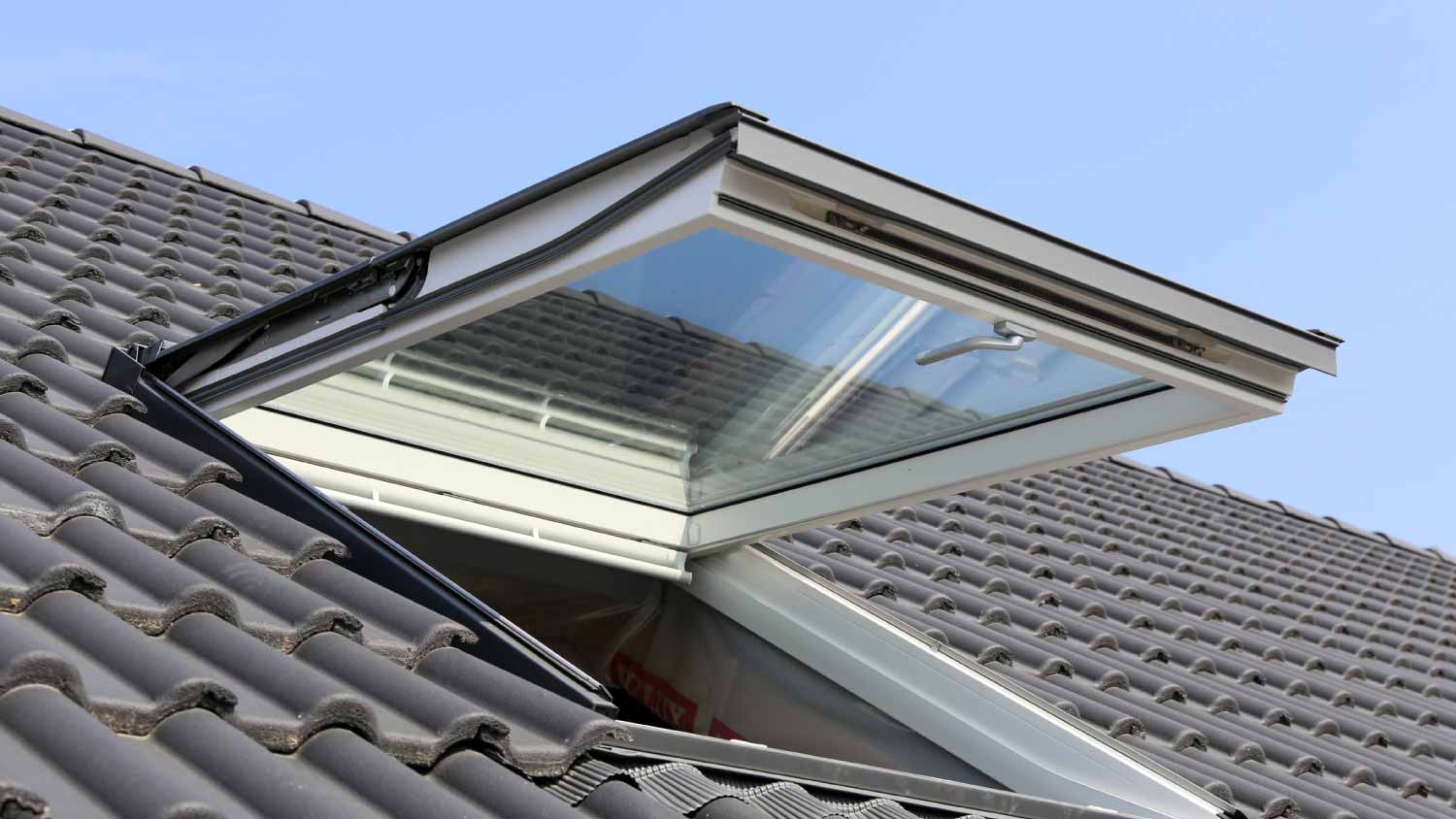How to Install a Skylight in 9 Steps
Let natural light into your home


- Fall protection (rope and harness)
- Hammer
- Circular saw
- Drill
- Tin snips
- Skylight
- Two by fours
- Drywall
- Roofing paper
- Roofing nails
Skylights are an energy-efficient way to bring light into your home. They also happen to be downright gorgeous. Skylights make a great addition to any part of your home that would otherwise rely on artificial lighting.
This project, best suited for an experienced DIYer who’s comfortable working on the roof and ladders, can transform your home in just a few days. Let’s get to work!
Prepping to Install a Skylight
Before you install a skylight, you need to make sure you have done the necessary preparation in order for the task to go smoothly. The first thing you’ll want to do is pick out the type of skylight you want.
There are three different types of skylight: fixed, ventilating, and tubular.
Fixed skylights don’t let anything in or out of the window, but provide natural light.
Ventilated skylights open up to let in the fresh air.
Tubular skylights are shaped like domes or tubes that redirect light in a way that mimics a lighting fixture without the electricity bill.
After you’ve selected the skylight, you need to decide where it’s going to go. Skylight placement is important because you can’t cut into the roof’s rafters without seriously compromising its integrity. Use blueprints to help you choose wisely, and if you don’t have access to those, consult a local general contractor or a roofer in your area.
9 Steps to Install a Skylight
Moderately experienced DIYers working with a friend can install a skylight courtesy of the many skylight kits available for purchase.
Installation can vary, but here’s a general look at how to install a skylight:
Use Safety Equipment
This is a job that’s going to require you to work on the roof, and that means that in addition to wearing a harness and rope in case of accidents, you should have a friend working with you to help lessen the load in addition to having each other’s backs.
Identify and Mark Location
Mark out where your skylight will go using a chalk line. You’ll need to mark the perimeter with nails to help you easily identify it once the shingles are off, but for now, chalk is fine.
Remove Shingles
 Photo: Kathy images / Adobe Stock
Photo: Kathy images / Adobe StockRemove or cut back shingles (as appropriate) on the section of the roof where you’re installing the skylight.
Cut the Skylight Opening
On your roof, drill a hole in the center of where your skylight will go. Then, using your circular saw, cut out the skylight’s opening.
Frame the Skylight Opening
Frame your future skylight by installing 2-by-4s (or 2-by-6s, if the roof is deeper) at the top and bottom of the skylight hole where they will sit as joists, supporting the skylight.
Attach the Skylight
Lower your skylight onto the opening and make sure it’s centered properly. Once you’ve done that, nail or screw it in place.
Affix Roofing Paper
Take 8-inch strips of roofing paper and line each side of the skylight opening with the paper. The roofing paper is the first step (followed by shingles and then flashing) to keeping your skylight watertight.
Replace Shingles
Cover the exposed roofing paper on each side with shingles. You will likely have to cut them down to size using your utility knife. Use tin snips or other tools to remove any old roofing nails you find. Replace them with new nails.
“When we replace shingles, we not only want to put them in to exactly replace the damaged ones, we also apply a liberal amount of roofing tar caulk under the new shingles to prevent leaking,” says Bob Tschudi, Angi Expert Review Board member and general contractor in Raleigh, NC.
Install Flashing
 Photo: Iriana Shiyan / Adobe Stock
Photo: Iriana Shiyan / Adobe StockMake sure you affix the bottom flashing first. All of the flashing should overlap your shingles. Once the bottom is in place, install the sides and finish with the top.
Additional Questions
Can I install a skylight myself?
Two factors determine whether or not you can install a skylight yourself: your relationship with heights and your level of DIY experience. This is a project for a DIYer who isn’t afraid to work on their roof and who has a decent amount of experience. If you don’t check both these boxes, consider leaving the job to the professionals.
How much does professional skylight installation cost?
On average, American homeowners spend $1,700 on professional skylight installation costs, according to HomeAdvisor.
Can you install a skylight on a metal roof?
It’s possible to have a skylight installed on a metal roof, but for many homeowners, the downsides outweigh the benefits. This may include buildup on the roof that leads to rust, loud noise, and the potential for leaks, including air leaks that breed mold.
How long do skylights last?
The average life of a skylight is 8 to 15 years.
















